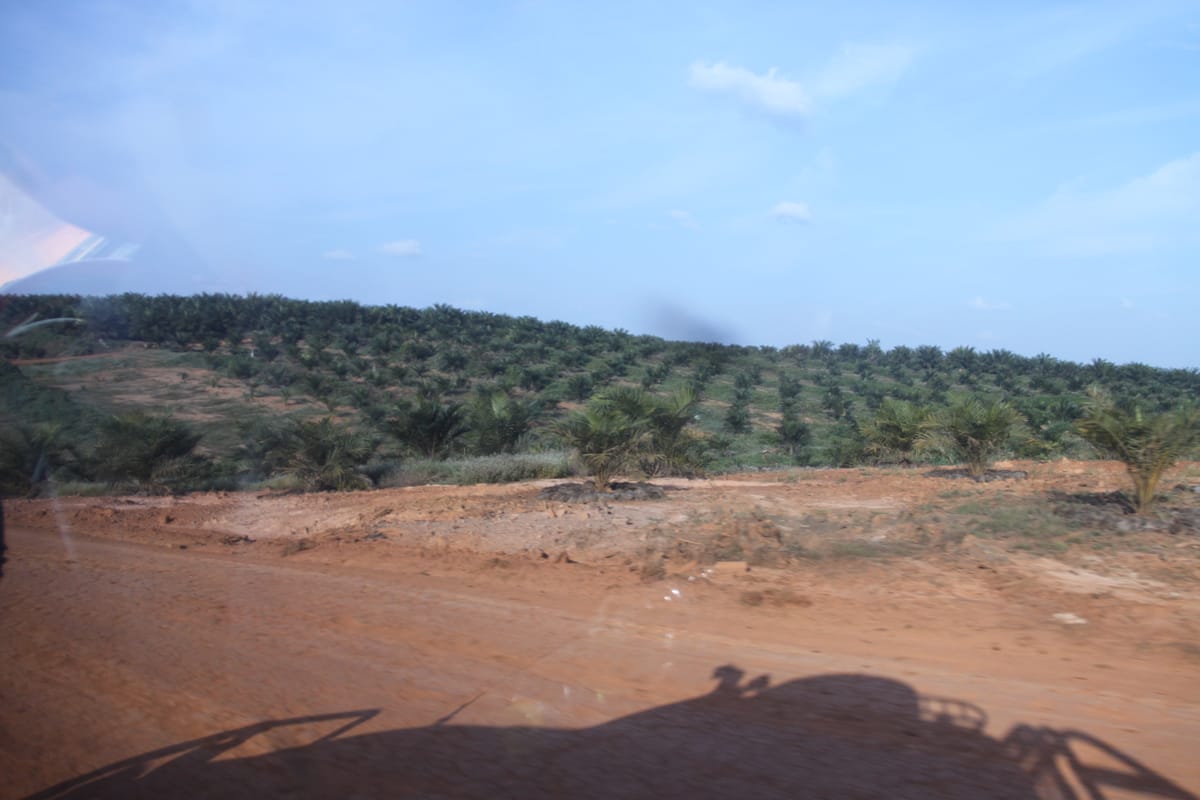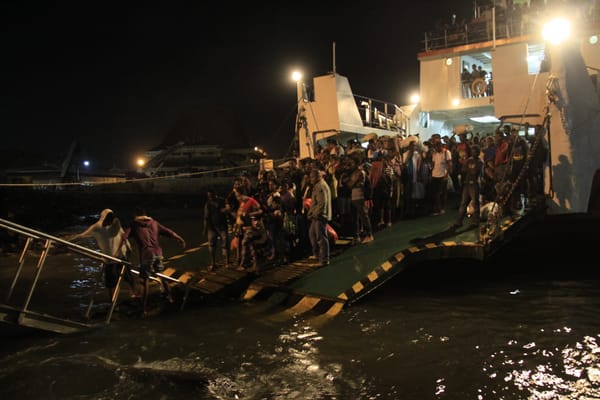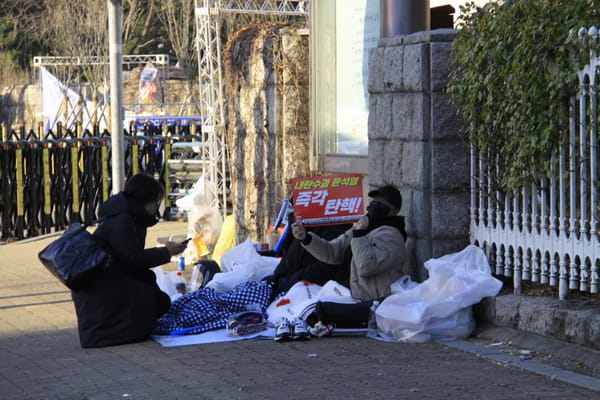Asia Undercovered Round-up: 22 January 2025

Hello, welcome to Asia Undercovered 2025 issue no.02!
Last two weeks have been a sleepless one for me as a Korean person. Most Koreans had to stay up late to check whether president Yoon had been arrested or not, whether the arrest warrant was issued for Yoon to be put in prison cell or not. And the South Korean president is arrested and put in prison. About what happened to South Korea from last December till today, please revisit Asia Undercovered’s 2025 first issue.
While waiting and watching for the live streaming news updates on Yoon and investigation and funeral of the Jeju Air crash on Jan.18, I spent a long time reading the following news about our region.
Please click the following audio buttons of each story if you are driving or taking a walk but still want to read this newsletter.
Japan’s outreach for defense cooperation in Southeast Asia: Malaysia and Indonesia
Instead of planned visit to South Korea, Japan's Prime Minister Shigeru Ishiba visited Malaysia(Jan. 9-10, 2025) and Indonesia(Jan.10-11, 2025) to strengthen ties with the Southeast Asian region.
“I want to place greater importance than ever on relations with Southeast Asia,” Ishiba told reporters ahead of his first diplomatic visit overseas of the year.
"I plan to take time to discuss (with the Malaysian and Indonesian leaders) the future of this region, security issues and how the realization of a free and open Indo-Pacific will contribute to the peace and security of the international community," told reporters before leaving Tokyo's Haneda airport.
After the Malaysia-Japan summit, Malaysian Prime Minister Anwar said he had mentioned the formation of the ASEAN Energy Grid linking Laos, Thailand, Malaysia, and Singapore, and the initiative by Sarawak for an undersea energy cable from Sarawak to Peninsular Malaysia and Singapore. “This requires participation from Japan, other than the countries involved,” he added.
At a joint press conference after the meeting, PM Ishiba expressed his intention to advance cooperation in the security field with Malaysia, which is a key point on the sea lanes. "For Japan, strengthening cooperation with the Association of Southeast Asian Nations (ASEAN) is one of the top priorities," he said.
Japan's focus during Ishiba's recent trips was on security, utilizing the official security assistance framework under which defense equipment and other items are supplied to allies' militaries at no cost.
Indonesian President Prabowo told Ishiba that he viewed Japan as “a long-standing partner and friend” and that he would like Tokyo to contribute to his administration’s key priorities, including improving Indonesia’s defense capabilities.
Indonesia and Japan agreed on Tokyo to give Jakarta high-speed patrol boats using a cooperation framework called the Official Security Assistance (OSA).
This defense cooperation agreement, however, is causing concern. “We cannot deny the possibility that the other country may get into a war in the future and use military equipment made in Japan. In reality, we have no choice but to leave proper management up to the other country, so there is a risk that Japan, which provided the military equipment, will be drawn into the conflict,” wrote the Japanese local newspaper the Hokkaido Shimbun.
In addition to defense cooperation, Indonesia-Japan bilateral meeting also resulted in agreements for Japan to contribute to several of Prabowo’s priorities on the food and energy self-sufficiency agenda.
Indonesia’s Merauke Food Estate project and South Korea's involvement
Merauke in Indonesian-administered Papua has recently become a headline for Indonesian media houses for its Food Estate saga with the Indonesian “Crazy Rich” from Borneo, Haji Isam behind.
This problematic project lacks an Environmental Impact Assessment (AMDAL) and has the potential to significantly increase carbon emissions due to the vast amount of forest that will be cleared to make way for sugarcane plantations and rice fields. About how the Food Estate project becomes a disaster for local community and our climate, please check the field report and Op-ed of Indonesian weekly Tempo from 2021 reporting package.
Recent studies from the Center of Economic and Law Studies (CELIOS) reveal that Indonesia plans to clear 2 million hectares of forest for a mega food estate project in Merauke. This could potentially create a surge in carbon emissions amounting to 782.45 million tons of CO₂, equivalent to a carbon loss of 47.73 trillion Indonesian Rupiah. As a result of the food estate project in Merauke, Indonesia is likely to fall short of its Net Zero Emission target by 5 to 10 years, which is set for 2050.
Febriana, who runs a newsletter service ‘Indonesia at a crossroads’ did her own conversion of the 782,450,000 tons of CO₂ in the Environmental Protection Agency (EPA) calculator and the result is shocking. This is equivalent to greenhouse gas emission from:
- 1,643,398,796 barrels of oil consumption
- 165,570,805 gasoline-powered passenger vehicles drive for one year
- 95,327,556 homes' energy use for one year
- 187 coal-fired power plants for one year
Just a reminder that the Merauke forest had already been cleared previously for palm oil plantations. Even before the announcement of the Food Estate project, the region ranked first in deforestation in Papua, as reported by Auriga Nusantara and the Independent Forest Monitoring Network (JPIK) in 2022.
Auriga’s report revealed that Papua has the largest tropical forest in Indonesia, covering 38 million hectares. This forest area makes up 91.12 percent of Papua’s land. From 2001 to 2019 alone, 663,443 hectares of the forest was cleared due to deforestation.
Merauke broke the record for deforestation in Papua, with 120,000 hectares of forest cleared, or 18 percent of the total deforestation in the province, mostly by the Korean-owned companies. Most of this deforestation occurred in concessions for extractive industries, such as palm oil plantations.
Now, the region has to bear the brunt of further deforestation for the food estate project, with the government cracking down on the protesters.
The indigenous community in Merauke has faced significant intimidation and psychological terror in response to their protests against the Food Estate project. A local Papuan online media the Tabloid Jubi, reported:
- A group of soldiers reportedly searched for Simon Balagaize, an indigenous leader who tried to stop the company’s activity, and threatened him with harm if they found him.
- Ariston Moyuwend, another indigenous leader, also shared that his relative, who requested that the company not enter the sacred land of the Malind indigenous community and tried to stop the excavator from operating on their ancestral land, was threatened by security forces.
- Intelligence agents have been closely monitoring meetings and discussions related to the project, making it difficult for indigenous leaders to freely express their concerns.
- Security forces have also restricted community activities, such as hunting and gathering food, by imposing time limits and curbing their freedom.
The Merauke Solidarity Group, representing the indigenous communities of Malind, Makleuw, Yei, and Khimaima, who are affected by the project, has officially submitting their complaint to DPD (Regional Representative Council) mentioning in the letter that “this project violates the human rights of the indigenous Papuans and causes environmental destruction.”
But above all, it’s a case of the same old, same old with the transition of the government, from Joko Widodo to Prabowo Subianto, in handling the environmental problems in West Papua.
What’s alarming for me, Seulki, is that South Korea had already been involved in Indonesia’s Food Estate project from the second Jokowi administration(2019-2024). According to an official document obtained through a request for disclosure of information upon South Korea’s Freedom of Information Act, state-owned company Korea Rural Community Corporation participated in irrigation of 14 project areas across the archipelago.
For 30 months from February 4, 2022, Korea Rural Community Corporation worked on three main sectors.
- 108,000 hectares of agricultural land irrigation and drainage facilities renovation, revitalization and modernization.
- Development and introduction of water management strategies to reduce vulnerability to climate change, and improvement of water and energy efficiency in renovation facilities.
- Information gathering, management, decision-making support, monitoring equipment and tools operations support.
The total project cost for the Korean state-owned company was around 20 million US$ and that was provided by the World Bank through Indonesian Ministry of Public Works and Public Housing’s Water Resources Agency.
I and Febriana will keep our eyes on whether South Korea or overseas governmental or non-governmental player be involved in any way to Merauke Food Estate Project in coming months and years.
Rohingya boat people’s arrival: The case of Sri Lanka and Malaysia
At the end of last year and the beginning of the new year, there were Rohingya boat people seeking asylum across the Indian Ocean. But countries alongside the coast reacted differently and made sharp contrasts, unfortunately.
Mullivaikkal is a remote coastal village in the Northern district of Mullaitivu in Sri Lanka, where ethnic composition is predominantly Tamil. Mullivaikkal is significant place of Asian contemporary history as it is where Sri Lanka’s three-decade of civil war came to a bloody end in 2009.
According to Sri Lankan media Daily Mirror, Rohingya asylum seekers fleeing persecution from Myanmar had turned up at sea in front of Mllivaikkal on December 19, 2024. Local fishermen in Mullivaikkal were amongst the first to sight the boat and assist them to land ashore using their small fishing boat, 10 people at a time.
Despite the Navy officer’s reluctance, local fishermen called a doctor and two public health inspectors, and Navy officers to visit the Rohingya asylum seekers’ boat. Ambulance came to the site later and local fishers made about 20 trips to bring them all to the shore. As the news spread, local people started to bring food.
Amadoru Amarajeewa, a local journalist, had managed to briefly interview a few asylum seekers on the site and had described them as hungry and weary. Some of the children and women were dehydrated and unable to walk. They had been at sea for 16 days without minimal sanitary facilities. One of the refuge from the boat said that they had left Myanmar in three boats, two had broken down and that people in those boats had also boarded. Six had died during the journey. The distance across open seas from Myanmar to Sri Lanka is more than 2,000 kilometers.
One refugee said that he had left his home due to the ongoing ethnic conflict in Myanmar and that he had to bribe the country’s security forces and flee illegally. Another refugee said his village was being bombed, forcing him to leave the country in search of safety. Another said that communication links with his village had been cut off, and he feared for his life.
Meanwhile, Malaysia's coast guard escorted away from its waters two boats carrying almost 300 undocumented Myanmar migrants found in a state of exhaustion for lack of food and water, on January 6, 2025, according to Reuters.
Malaysian authorities gave them food supplies and clean drinking water after the boats were discovered southwest off the coast of Langkawi island, but turned back boats away, we don’t know yet to where.
Before wrapping, I would like to recommend Newsletter services from Asian writers and journalists to subscribe and worth supporting.
Southeast Asia
A Singaporean independent journalist/award-winning human rights essayist Kirsten Han's newsletter We, the Citizens focusing on politics, democracy, human rights, and social justice of Singapore. Kirsten brings you the ground reality and context about how the Singapore state functions when Asian government officials and lawmakers only try to spotlight its economic success stories.
A Cambodian communications specialist, writer, and researcher Darathtey Din brings you major news headlines from Cambodia in one place with her own rare perspectives at Campuccino. Drathtey, also a culture enthusiast, wrote a book about Cambodian youth cultural identities.
And there’s a newsletter called Indonesia at a crossroads that explores Indonesian politics—particularly on Prabowo Subianto’s administration by Indonesian investigative independent journalist Febriana Firdaus. Febriana, with more than 15 years of field reporting experience, appeared in award-winning documentary film <Our Mothers’ Land> to show us how Indonesian women across the archipelago carry on their fight against the country's development injustices.
Ho Chi Minh City-based journalist Michael Tatarski brings you a great curation of news updates on Vietnam every week at Vietnam Weekly. For the paid subscribers, Michael provides content on anti-corruption campaigns, energy transition, the economy, and VinFast. You could also check out weekly podcasts and short video services on YouTube.
Kuala Lumpur-based journalist Emmanuel Samarathisa runs a weekly newsletter The Malaysianist on Malaysian current affairs with a focus on money and power. Emmanuel shares an extraordinarily new perspective about how Malaysia’s power and money works which is rare to find in any local or international media coverage.
South Asia
Chennai-based journalist Mohammed Rayaan runs a local weekly journalism newsletter The Chennai Emailer which covers original and curated stories of residents, entrepreneurs and business in Chennai, India. From Rayaan, you will not miss important stories in the vibrant print and digital media landscape of greater Chennai, a metro city with a population of more than 12 million.
Journalist Pranaya Rana provides you with a selected news article on Nepali current affairs and a story of his own every weekm at Kalam Weekly. I’m a new subscriber to it to catch up what is happening in the country where I lived for almost 2 years as an independent backpacking journalist.
Taiwan
Taiwanese online news publication the New Bloom runs a newsletter service to provide a space for readers and community members outside of Taipei, the capital city, to engage in the broader political dialogue. Free subscribers can get biweekly publication of news roundups.
If you enjoyed reading, listening to this newsletter, you might want to buy me a cup or cups of coffee? It can also be cups of black tea which usually costs around 4,000 Korean Won or 3 US$. This will be a fuel for me to read, digest and write, record this letter to you twice a month on every other Wednesday.
Thank you for the support!


